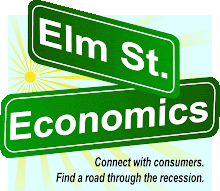One might assume this posting is about the restaurant industry. But I think its implications stretch into many other categories.
Not long ago, Applebee’s was a casual family restaurant. But apparently, they have become a fast food restaurant. What did Applebee’s change? Nothing. Now, they’ll run food out to your car if you call ahead with an order… but they’ve been doing that for years. What has changed is the consumer’s definition of what “fast food” means, according to Technomic research cited by a story in today’s Media Post Marketing Daily.
The article suggests that this shift is self-induced; many fast casual restaurants have long been hitting the consumer with messages about low prices and high velocity service. Those are the keystones of a fast food restaurant, so…
Makes sense, doesn’t it?
Implications: As consumers were down-grading their out-of-home dining costs/consumption during the Great Recession, lots of companies were striving to retain their share of the restaurant dollar, even if that meant competing with the price-oriented burger joint down the street. And in their effort to say, “We can do that, too,” when it comes to speed and value, it looks like many casual sit-down restaurants have succeeded in being compared to standard quick service restaurants (QSRs).
As the recovery unfolds, I wonder if sit-down restaurants will remain happy about that comparison. Low margin product sold in high volume is a model that serves the fast food industry well. But is “fast and cheap” a sustainable model, over the long term, for places like Panera Bread, Applebee’s, or TGIFriday’s? Or will casual, sit-down restaurants need to re-build an identity that is associated more with quality than cost?
Many companies and categories have used extraordinary tactics to protect or gain share during the recession, with price cutting chief among them. But the questions become:
Will the tactics that served you well during recession serve you, also, in the recovery?
Did you adjust so successfully during the recession that your temporary plan became (or confused) your primary identity?
If you’ve spent three years teaching consumers that you’re a discounter, in what ways might you gradually return to sustainable margins? How will you help the consumer reconcile/justify a less discounted price?
Have the efficiency measures and other adjustments to your business helped you discover a new way of doing business that is sustainable over the long haul?
These questions can be tough to answer, but they can be even more painful to ignore. Start by considering this question first: How does the consumer define you? After all, you are who the customer thinks you are.
Mike Anderson
Tuesday, January 19, 2010
How does the consumer define you?
Labels:
Advertising,
Corporate Character,
Customer Service,
Hospitality,
Luxury,
Recovery,
Restaurants,
Retail,
Upscale
Subscribe to:
Post Comments (Atom)



No comments:
Post a Comment